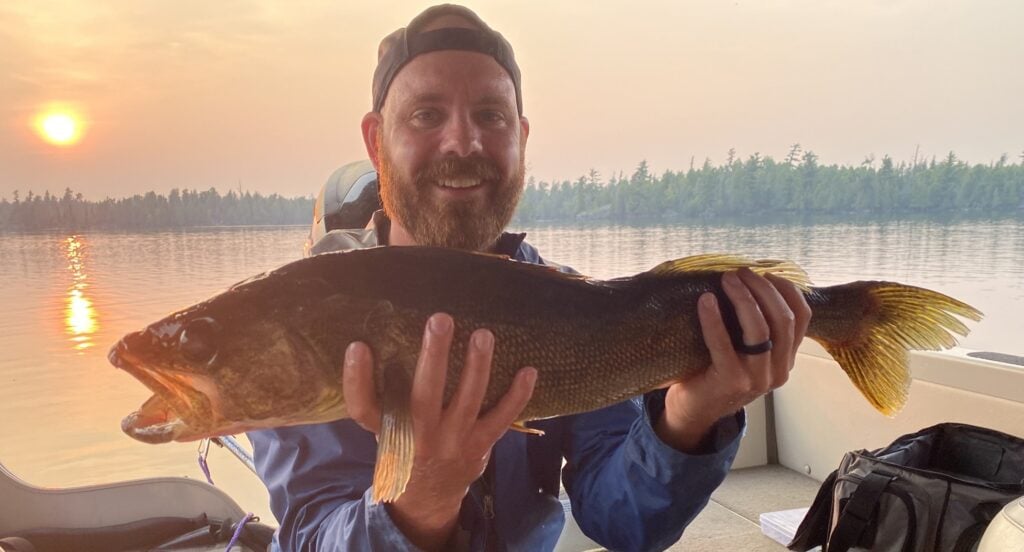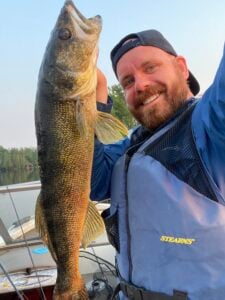Catching a 27-inch walleye isn’t something that happens every day—especially after several skunked outings. This summer on Cedar Lake in Ely, Minnesota, I finally landed my personal best walleye, and it came only after changing tactics. If you’re looking for tips on how to catch big walleye in summer, or wondering whether jigging or crawler harnesses work better, this story should help.

When the Crawler Harness Doesn’t Work
Like most anglers chasing summer walleye, I started out trolling crawler harnesses over underwater reefs, islands, rock piles, and flats. This method is excellent for covering water and finding active fish, and plenty of recent fishing reports from Ely MN had shown success on harnesses.
But not for me. I tried different trolling speeds, depths, and times of day—morning, evening, even late-night. Nothing. At this point, I started wondering if Cedar Lake was one of those “dead” waters.
Talking to Locals Changed Everything
At a local Ely bait shop, I mentioned my struggles. The clerk smiled and told me, “Cedar is one of my favorite walleye lakes.”
So it wasn’t the lake—it was me.
He then gave me the golden tip: “Fish the humps and jig. And if you’ve got gold jigs, use them.” I grabbed the last pack of gold jigs and headed back to the lake with a new plan.
Jigging the Humps for Walleye
Using my depth finder, I set the boat directly over a hump in about 15 feet of water. With the trolling motor set to a crawl (0.5 mph), I began jigging nightcrawlers on a gold jig.
At first—nothing. After days of blanking with harnesses, it was hard not to feel discouraged.
Then I felt the tap-tap.
I set the hook hard, thinking I’d snagged bottom. But the drag screamed, and I felt the unmistakable headshakes of a big walleye. Fishing alone, I managed to keep the rod bent with one hand while fumbling for the net with the other.
When she finally surfaced, I saw the massive head of a 27-inch walleye. I slid her into the net, sat down, and just breathed. After so many empty casts, I had landed a master-angler fish.

Key Takeaways for Catching Walleye
This experience taught me a few lessons every angler can use when fishing for walleye:
-
Crawler Harnesses: Best for covering lots of water but not great for holding over structure.
-
Jigging for Walleye: Perfect for targeting walleye on humps and points where fish concentrate.
-
Talk to Locals: Bait shops often know the hot colors, depths, and presentations better than any online report.
-
Adapt: Fish don’t always follow the same rules. Don’t be afraid to switch techniques. I have had a lot of success using crawler harnesses, but I needed to adapt in order to have success this summer on Cedar Lake.
Final Thoughts
If you’re fishing Ely’s lakes—whether Cedar Lake, Basswood, Burntside, or Snowbank—remember that sometimes slowing down and jigging is the key to unlocking big walleye. The crawler harness didn’t get it done for me this time, but a simple gold jig and a nightcrawler produced the fish of a lifetime.
Want more fishing stories, tips, and gear guides like this? 🎣 Subscribe to Boundary Voyage and get insider fishing secrets straight to your inbox.

0 Comments